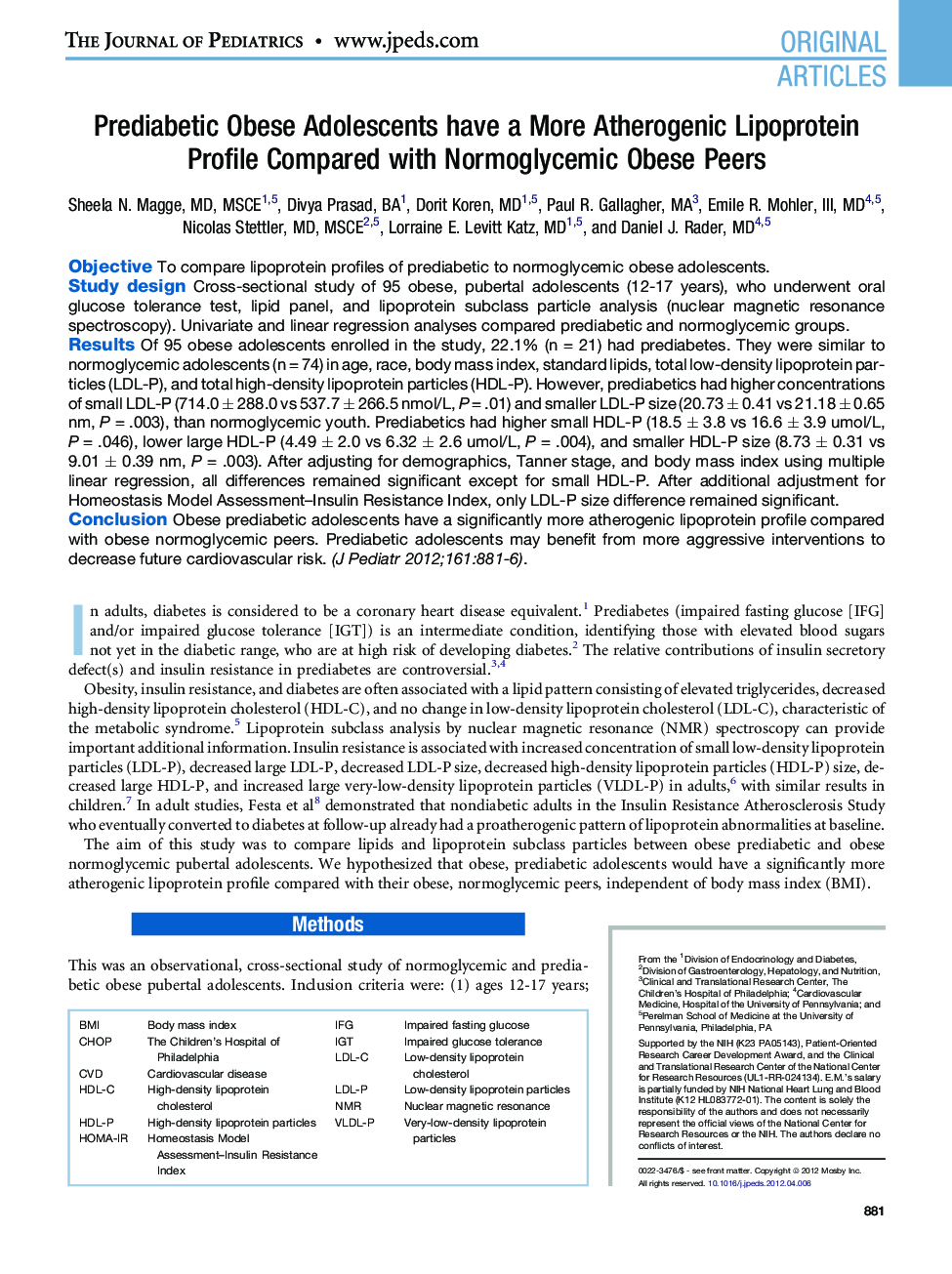| Article ID | Journal | Published Year | Pages | File Type |
|---|---|---|---|---|
| 6224727 | The Journal of Pediatrics | 2012 | 6 Pages |
ObjectiveTo compare lipoprotein profiles of prediabetic to normoglycemic obese adolescents.Study designCross-sectional study of 95 obese, pubertal adolescents (12-17 years), who underwent oral glucose tolerance test, lipid panel, and lipoprotein subclass particle analysis (nuclear magnetic resonance spectroscopy). Univariate and linear regression analyses compared prediabetic and normoglycemic groups.ResultsOf 95 obese adolescents enrolled in the study, 22.1% (n = 21) had prediabetes. They were similar to normoglycemic adolescents (n = 74) in age, race, body mass index, standard lipids, total low-density lipoprotein particles (LDL-P), and total high-density lipoprotein particles (HDL-P). However, prediabetics had higher concentrations of small LDL-P (714.0 ± 288.0 vs 537.7 ± 266.5 nmol/L, P = .01) and smaller LDL-P size (20.73 ± 0.41 vs 21.18 ± 0.65 nm, P = .003), than normoglycemic youth. Prediabetics had higher small HDL-P (18.5 ± 3.8 vs 16.6 ± 3.9 umol/L, P = .046), lower large HDL-P (4.49 ± 2.0 vs 6.32 ± 2.6 umol/L, P = .004), and smaller HDL-P size (8.73 ± 0.31 vs 9.01 ± 0.39 nm, P = .003). After adjusting for demographics, Tanner stage, and body mass index using multiple linear regression, all differences remained significant except for small HDL-P. After additional adjustment for Homeostasis Model Assessment-Insulin Resistance Index, only LDL-P size difference remained significant.ConclusionObese prediabetic adolescents have a significantly more atherogenic lipoprotein profile compared with obese normoglycemic peers. Prediabetic adolescents may benefit from more aggressive interventions to decrease future cardiovascular risk.
